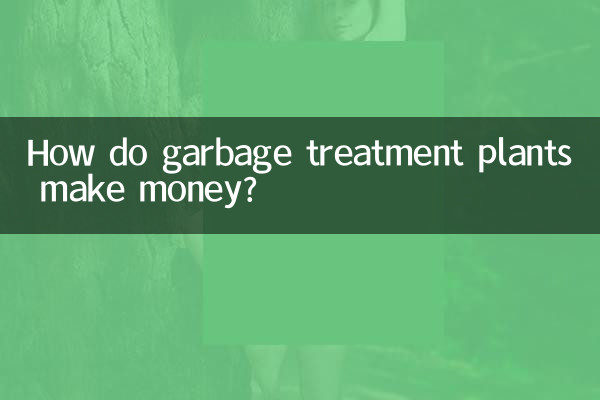How do garbage treatment plants make money? Revealing the “Waste-to-Treasure” business model of the environmental protection industry
With the increase in global environmental awareness, waste treatment plants have transformed from mere public service facilities into an industry with both social and economic benefits. The following is an analysis of the profit model of garbage treatment plants that has been hotly discussed on the Internet in the past 10 days. It will be explained in detail for you based on structured data.
1. Main sources of profit for waste treatment plants

| Profit channels | Proportion | Specific methods |
|---|---|---|
| government subsidies | 35%-50% | Processing fee subsidies, tax incentives, land policies |
| Sales of renewable resources | 25%-40% | Metal/plastic recycling, biogas power generation, fertilizer production |
| Carbon trading revenue | 5%-15% | Emission reduction indicator sales, CCER projects |
| Technical service output | 10%-20% | Equipment leasing, process patent licensing |
2. Technical and economic comparison of popular treatments
| Processing method | Investment cost (yuan/ton) | Operating cost (yuan/ton) | Earning potential |
|---|---|---|---|
| Incineration to generate electricity | 400,000-600,000 | 80-120 | High (energy + subsidy) |
| biodegradable | 200,000-300,000 | 50-80 | Medium (fertilizer sales) |
| Landfill gas collection | 150,000-250,000 | 30-50 | Low (needs scale effect) |
3. Recent industry hot trends
1.Breakthrough in plastic chemical recycling technology: A company in Zhejiang has achieved 100% depolymerization and regeneration of PET plastic, reducing costs by 40% compared with traditional methods, triggering an investment boom.
2.Increased carbon credit policy: The Ministry of Ecology and Environment’s new regulations shorten the review cycle for waste incineration CCER projects to three months, which is expected to bring about a 15% revenue growth for the industry.
3.Food waste disposal subsidy increased: Eight cities including Beijing and Shanghai announced increases in unit prices for food waste disposal, with an average increase of 22%.
4. Innovative Profit Cases
1.Internet of Things + Junk Bank: A factory in Shenzhen has launched an intelligent classification and recycling system. Residents can put in goods that can be redeemed with points, and companies can obtain high-quality recycled raw materials.
2.Cross-border cooperation in hazardous waste treatment: A listed company and lithium battery manufacturers jointly built a recycling line to realize a closed-loop economy of cobalt and nickel metal.
3.Garbage dump photovoltaic project: After the landfill is closed, a photovoltaic power station will be built to increase the land reuse rate by 300%.
5. Industry challenges and countermeasures
| challenge | solution | Success Stories |
|---|---|---|
| NIMBY effect | Build an environmental protection education base | Guangzhou Fushan Circular Economy Industrial Park |
| Raw material fluctuations | Sign a guaranteed supply agreement | Shanghai Laogang Solid Waste Base |
| Technology iteration | Industry-university-research cooperation fund | Tsinghua University-Ebright Environmental Research Institute |
The waste treatment industry is currently transforming from a "cost center" to a "profit center".The industry average gross profit margin will reach 18.7% in 2023, an increase of 6.2 percentage points from five years ago. In the future, as ESG investment heats up and technology advances, the profit model of waste treatment plants will become more diversified.

check the details

check the details